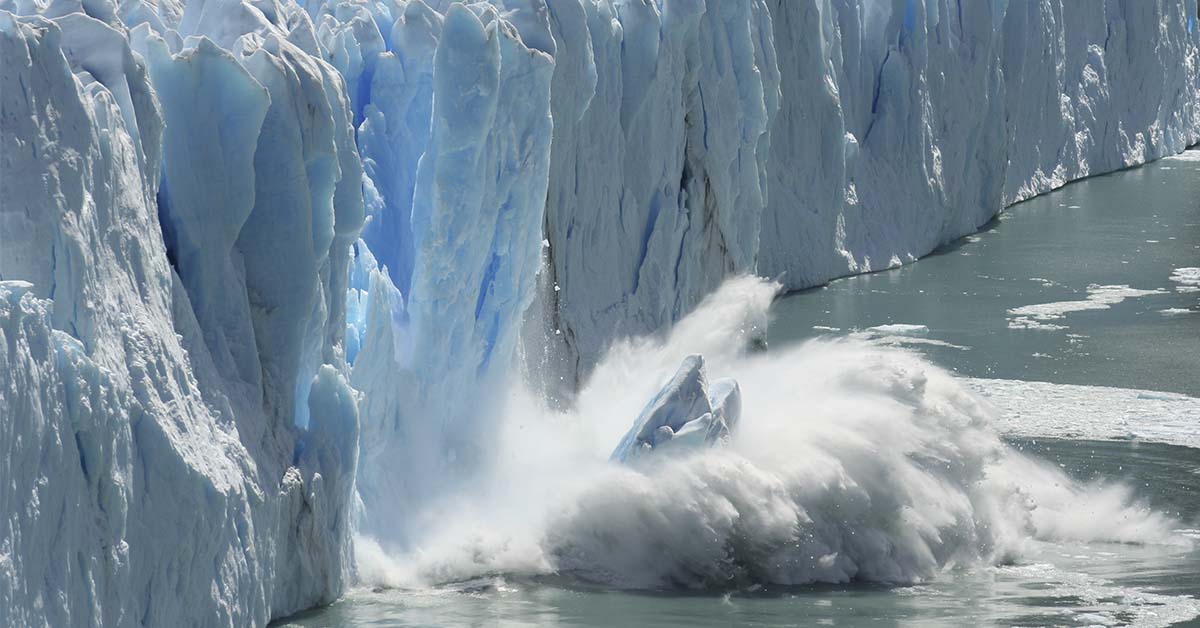Climate change is a hot topic, pun intended. Scientists have been warning people that time is of the essence, and these days, climate change is seen as more of a threat than ever. Researchers have been studying glaciers in the Antarctic. One particular stretch of ice was dubbed the Doomsday glacier because if it were to melt, it could raise the sea level significantly. After a recent expedition, scientists found that it has retreated exponentially over the last two centuries. Now, it’s only holding on by its “fingernails”.

The Doomsday Glacier
Scientists and researchers alike are shocked by a recent discovery. They have been keeping an eye on a certain glacier, officially known as Antarctica’s Thwaites Glacier. It is about the same size as Florida, and they say that if it melts, Earth’s oceans will rise about 10ft. This glacier has become the estimation point of climate change. Thus, it has been nicknamed the doomsday glacier.
For the first time in history, researchers were able to gain access to the front of the glacier. The expedition was run by a Swedish group, who got an underwater robotic vehicle to roam the glacier front. The vehicle was equipped with imagery sensors, and they were able to map out the base of the glacier. During this investigation, they found some chilling results.

According to scientific reports, the doomsday glacier had lost contact with the seabed ridge somewhere over the last 2 centuries, lasting about six months. This caused the glacier to retreat 2.3km every year. That is about 1.3miles. This on-the-ground research expedition allowed the climate scientist to gain a much more accurate idea of the glacier’s decline. Previously, they used satellite imagery, but that information was half the amount that the robotic vehicle estimated.
Read: Scientists Are Investigating A Giant Mysterious Sinkhole That’s Still Growing
Scientists are heavily concerned
Scientist Alastair Graham was the lead author of the team, and he gave insight into the information they received from the robotic vehicle. “Our results suggest that pulses of very rapid retreat have occurred at Thwaites Glacier in the last two centuries, and possibly as recently as the mid-20th Century,” said Graham. He went on the describe that this” was truly a once-in-a-lifetime mission. The images Ran collected give us vital insights into the processes happening at the critical junction between the glacier and the ocean today.”
Robert Larter, a marine geophysicist, and co-author, from the British Antarctic Survey was one of the researchers who embarked on the journey around the doomsday glacier. He said, “Thwaites is really holding on today by its fingernails. And we should expect to see big changes over small timescales in the future – even from one year to the next – once the glacier retreats beyond a shallow ridge in its bed.”
New #ThwaitesGlacier research: High resolution mapping of the the seafloor in West Antarctica has revealed periods of rapid retreat in Thwaites Glacier's history, providing critical insights into how it could behave in futurehttps://t.co/DCRFEF0QmC
— International Thwaites Glacier Collaboration (@GlacierThwaites) September 6, 2022
We were warned about the doomsday glacier
Less than a year ago, the Thwaites glacier was brought up as a concern. Scientists said that the glacier was on its final ice shelf. This was the last thing keeping it attached, and preventing it from breaking apart entirely. Once it finally breaks, the ice would melt in no time at all. Scientists had discovered a flow of warm water underneath the glacier, which has greatly contributed to the glacier retreating.
Not only that but there is a massive cavity underneath, which is where the glacier detached from the seabed ridge. It is roughly the size of Manhattan. Graham says that just the doomsday glacier is like a ticking time bomb. “Just a small kick to Thwaites could lead to a big response,” he says. Scientists are saying the extra water on Earth caused by the glacier melting with be devastating.
Keep Reading: Scientists baffled as Earth spins faster than usual – making days shorter
Sources
- “‘Doomsday glacier,’ which could raise sea level by several feet, is holding on ‘by its fingernails,’ scientists say.” CNN. Angela Fritz. September 6, 2022
- “Antarctica’s “doomsday glacier” could raise global sea levels by 10 feet. Scientists say it’s “holding on today by its fingernails.” CBS News. Li Cohen. September 6, 2022
- “Glacier the size of Florida is ‘hanging on by its fingernails’.” Unilad. Anish Vij. September 6, 2022.

